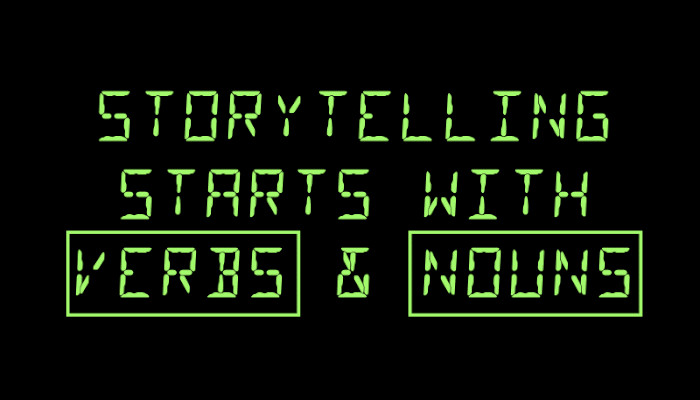
I must have watched the movie, Apollo 13, a dozen times, without noticing two, curious-looking words on the lunar module’s control panel: verb and noun. A simple Google-search revealed that they belonged to the DSKY display of the Apollo Guidance Computer (AGC). Not only did DSKY use an ingenious way to squeeze as much functionality out of a tiny computer with little memory, but it also taught me a fundamental lesson in human communications.
Computers execute commands and the Apollo design engineers chose to segment them into two parts: what the astronauts wanted to the AGC to do (verb) followed by a qualifier (noun) to act upon. In grammatical terms, the AGC was designed to perform a predicate on a subject. Astronauts used two tables that correlated numbers with specific verbs and nouns. By mixing and matching these numbers, astronauts could issue commands to perform a multitude of tasks.
For example, if an astronaut wanted to display the present time, they’d lookup the verb for display (VERB 06) and the noun for time (NOUN 36). Therefore, by punching-in 06 followed by ENTER for the verb, and then 36 followed by another ENTER to set the noun, the AGC would execute a program to display the current time from the AGC’s clock. The brilliance of the VERB/NOUN system allowed astronauts to express their wants succinctly.
Let’s try a less cosmic example. Imagine that you’re in a foreign city, have minimal understanding of the language, yet want to know where the closest pub is. Essentially, you need to find a way to execute the “Find Pub” program by answering two questions:
- Verb Question: What do you want to do? Drink
- Noun Question: What do you want to drink? Beer
The odds are that if you presented the sentence fragment “DRINK BEER” to a native speaker, they’d execute the “Find Pub” routine and point you in the right direction.
Now let’s put this concept into the context of storytelling. If a story is the result of people pursuing what they want, consider the wants of each Star Wars character expressed as a VERB/NOUN combination:
- Luke Skywalker: Destroy/Death Star
- Yoda: Teach/Luke
- Princess Leia: Resist/Empire
In addition, the premise of entire movies can be boiled down to their VERB/NOUN essentials:
- Apollo 13: Get/Home
- Rudy: Make/Team
- Smokey and the Bandit: Win/Bet
- Ocean’s Eleven: Rob/Casino
So, you want to tell a story, build a presentation, or create a marketing campaign. Start by taking a page from the Apollo spacecraft designers. Can you describe what you want through a simple combination of a verb and a noun?
Notes:
The Apollo Guidance Computer: A Kinder, Gentler Introduction